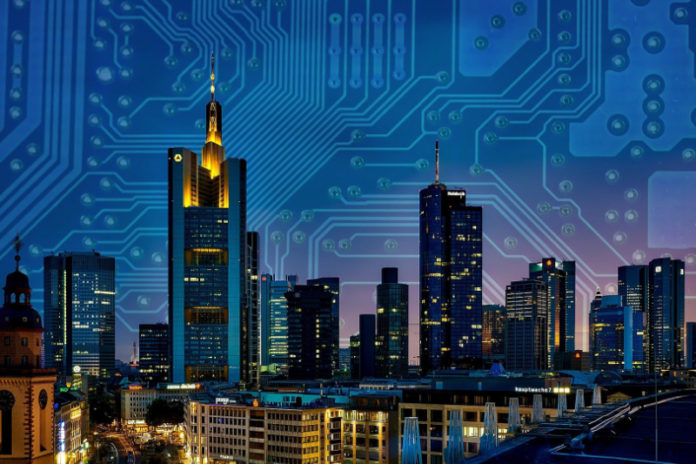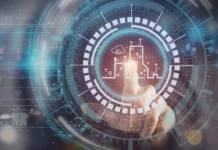The future of urban communities is no longer just an idea. As physical and digital spaces continuously merge as one, the stage has been set for human existence co-dependent on technology to live, work, and play.
In the same manner that innovations like the Internet of Things make life easier by enabling people to control their home appliances via smartphones, the advancement of machine learning and artificial intelligence (AI) save production companies, for example, on costs, time, and manpower. Likewise, cloud technology has allowed artists and filmmakers to easily store and share content amid a pandemic that has redefined the entire entertainment industry.
Hence, the incorporation of such technologies into urban planning allows communities to benefit from the latest available live, work, and play tools, thereby defining existence that rests on connectivity.
During the Lenovo C-Suite Chat Show titled “Smarter Urban Clusters: A Live-Work-Play Future,” experts gathered to discuss how smart cities will get even smarter in the future, based on available and upcoming technology.
For Sinisa Nikolic, Director of HPC and AI for Lenovo ISG Asia-Pacific, the parameters for smart city infrastructure, including its rationale and impact to the community, has to be clearly defined from the get-go.
“What is it that you want to get out of this smart city infrastructure? What do I want out of the technology? How do I better the community? How do I better my constituents? It all comes down to, more than anything else, making life more efficient— power utilisation more efficient— being able to move people around. It really just stems from the fact that how do you make life more efficient and better for the people that live, where they live, and where you are implementing these types of technologies,” Nikolic said.
The landscape so far
During the start of the pandemic, Singaporean entrepreneur, actor, and singer Gurmit Singh was among the countless people caught off guard with the paradigm shift.
“As soon as the lockdown was announced, my emails were ringing like crazy, and not in a good way. Because email after email started coming in (and) said, ‘We have to cancel the event, we have to cancel the event, this event is cancelled, we regret to inform you…’ It just went on and on. So my one-year calendar was suddenly wiped out. So times the number of artists who are out there in the market, (the) same thing must have happened,” Singh said.
It soon became clear that there was no other way for him to survive, but to adapt and work from home.
“We at home had to buy ring lights, invest in microphones, a few monitors—maybe even a few phones,” Singh shared.
During the last two years, individuals have been separated by physical distance because of the pandemic, and yet, 5G developments and the increased use of online collaboration tools have shattered borders, making every human being on the planet basically digital neighbours.
However, as technology facilitated the rise of remote work, it has also developed online fatigue among people.
“Everybody’s just on video. When it first started, it was brilliant. You were able to connect with people. You did miss the social aspect, but you were able to then have some social aspects. So you’d have a drink on a Friday night with friends or work colleagues. This is what you would do. And it was okay. But then it becomes a bit dangerous. After a while, it’s always on. There’s no time to just settle down a little bit,” Nikolic noted.
Singh also experienced the effects of blurred boundaries between personal and professional life as a result of remote work.
“Some people I met said it was nice to work from home. You don’t have to dress (up) anymore. You can do it (work) in your Speedos, if you want to, nobody will know. You can get up from bed and get to work in two minutes. You can sleep in further. But for me, it was tough. Because home has always been my last private sanctuary as a personality. As soon as I step on my car or (out of) my house, I’m private property. And I’m fine with that, because that’s part of my job. But to have to work at home, (what) my mind couldn’t get around is like ‘Why are you working when you should be resting, chilling? You know, having fun stuff. And here you are working.’ It was weird for me for six months,” Singh said.
For Sam Liew, Managing Partner for Government Strategic Business Group of tech services firm NCS, the pandemic accelerated the digital transformation in the workspace, which inadvertently had some repercussions for live and play spaces.
“If this pandemic hasn’t been here, the entire digitalisation, the collaboration, the extra transformation on working, will probably not be that high. It just means that the entire society has been locked up, and (the) only means to connect, to collaborate, to actually get to touch one another is through digital means. And hence, the entire transformation took place very, very much in the working space. I hope one day that transformation will come into the play space. And more and more of this world will come to the forefront, in terms of new business models, (and) new ways of connecting on the entertainment scene as well,” Liew said.
The evolution of smarter urban clusters
Some of the technologies essential in developing smart cities, according to Nikolic, are edge devices and 5G.
“So edge devices are clearly incredibly important,” he added. “Edge devices are those systems that you push closer to where the data actually is derived from. You would think of them as sensors. And then sensors would plug into a very small machine. We have those types of devices. We have backend server technology that will do most of the post-processing work, the storage to hold all of that data, and then to connect them all together (to) networks. Today we talk about low-powered Wi-Fi. And more than that, we talk about 5G, which derives massive bandwidth, huge speed and performance.”
For Liew, 5G is opening many doors for enterprises across industries. The issue is that enterprises must be ready to leverage the benefits of 5G technology.
“In terms of connecting people, applications, and devices, I think one other very important thing about 5G is the ability to kind of create new businesses and business models. Take, for example, in the space of supply chains, logistics, or autonomous vehicles. We could even enable autonomous vehicles to be connected, to be surveyed, to be monitored and piloted through 5G connectivity, and in real time. That really will start moving the needle for a lot of enterprises, since the question relates to enterprises. I would encourage all enterprises to rethink their business model vis-a-vis the proliferation of 5G,” Liew said.
Lenovo, alongside Intel and Spanish telco Cellnex, recently worked on an autonomous bus travel project in Barcelona, Spain, as part of a smart city initiative. Nikolic shared the processes involved in the design and implementation of the project.
“(The bus) can travel up and down certain corridors, taking a certain path, stopping at bus stops. But a lot of that requires a lot of back-end work. And in this case, it’s AI— a lot of AI, or machine learning. So you would educate the systems on the bus, to understand the road it’s on, understand where traffic is, foot traffic, maybe a dog or a cat running in front— how to react to those things. Whether somebody is hailing the bus, or waving to somebody that’s on the bus is different. So you know, being able to teach a system to do that. And so that becomes an AI use case, an edge device, which does all this inferencing that lives on the bus,” Nikolic shared.
Meanwhile, Liew emphasised the importance of setting up seamless mechanisms to gather, filter, and convert data from connected devices.
“How do you connect and collect data, and transform the data, or translate the data into actionable insights? For security, for retail, for marketing, or even for government and surveillance? I think those are really very important things. We need to make sure that is planned upfront,” Liew said.
Beyond the digital horizon
With the momentous digital transformation undertaken by enterprises in the last two years, it is clear that there is no going back to the old ways of doing business, Liew noted.
“I think workspaces will change. As we move towards smart cities, people will start to work from anywhere. We have to find the balance between the physical and digital spaces for collaboration. Delivering services to citizens at scale, and rethinking of the business model will definitely be the order of day, (as well as) maintaining information security without impacting user experiences,” he said.
“Now in regard to security, we will see, especially with connectivity like 5G, and even AI and video analytics— we’ll see a lot more surveillance-type of platforms. You’ll see a lot of solutions that actually help to digest big amounts of unstructured data, and provide enterprises with insights that previously would not have been gathered easily, because we’re not so connected,” Liew added.
Nikolic, for his part, stressed that for smart cities to thrive, urban planners and governments ought to consider people who may have a hard time adapting to new technology, or using technology at all, like senior citizens.
“At the end of the day, let’s just make an assumption that smart cities will be built (smart cities), and we’re living in the world today that they are being built around us. But let’s talk about the next piece, which is inclusion. That’s an important word in today’s world,” he said.
Because people are now spending more and more time online, Nikolic added that unplugging every now and then is important to maintain work-life balance in a smart urban ecosystem.
“I really think the downtime becomes incredibly important. You know, we’ll talk about mental health. Some people go ‘Oh, no, that’s nothing.’ It’s a very true thing. It is. You can burn out very quickly,” he said.
For Singh, human beings must not lose what makes them human in a world that is increasingly becoming digital.
“If we were robots, or cyborgs, maybe we would think differently, but because we are humans, we crave social interaction. That’s why (people) go to the water fountain, at the pantry, not because they are thirsty, but I think (at) a subconscious level, they want to just meet up (with) somebody and have a little chat,” Singh said.
“Now, we’ll get to a point where everything is replaceable, except consciousness. Maybe even then we still crave for interaction, I don’t know. So I think live shows are still going to be the mainstay for now. It’s just that while you’re watching live shows, there’ll be other technologies (that will help) boost the performance, or boost the marketing, or boost the live audience streaming, or what-have-you,” he concluded.
















